Khushi Gupta
EyePAD++: A Distillation-based approach for joint Eye Authentication and Presentation Attack Detection using Periocular Images
Dec 29, 2021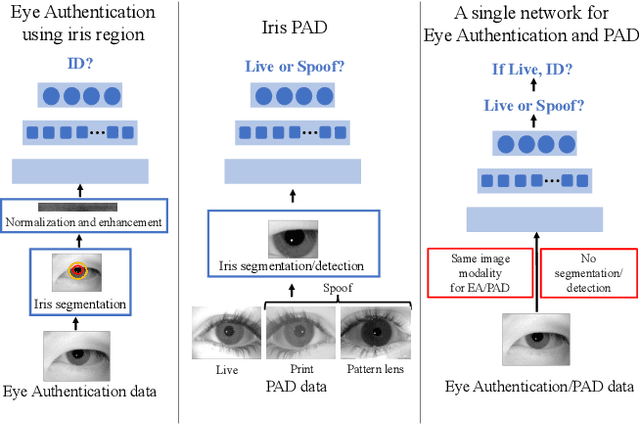
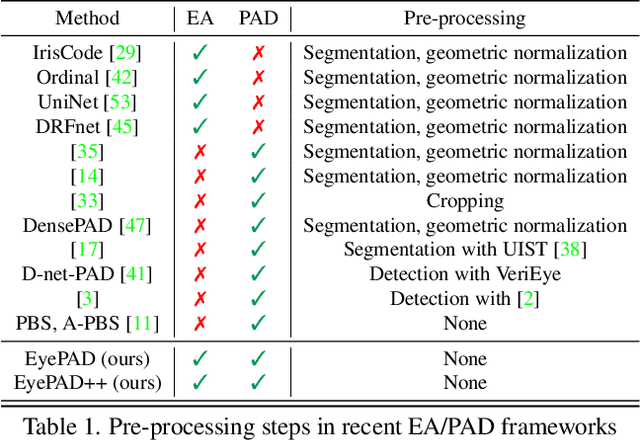

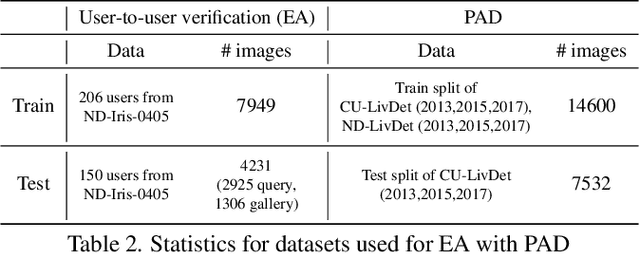
Abstract:A practical eye authentication (EA) system targeted for edge devices needs to perform authentication and be robust to presentation attacks, all while remaining compute and latency efficient. However, existing eye-based frameworks a) perform authentication and Presentation Attack Detection (PAD) independently and b) involve significant pre-processing steps to extract the iris region. Here, we introduce a joint framework for EA and PAD using periocular images. While a deep Multitask Learning (MTL) network can perform both the tasks, MTL suffers from the forgetting effect since the training datasets for EA and PAD are disjoint. To overcome this, we propose Eye Authentication with PAD (EyePAD), a distillation-based method that trains a single network for EA and PAD while reducing the effect of forgetting. To further improve the EA performance, we introduce a novel approach called EyePAD++ that includes training an MTL network on both EA and PAD data, while distilling the `versatility' of the EyePAD network through an additional distillation step. Our proposed methods outperform the SOTA in PAD and obtain near-SOTA performance in eye-to-eye verification, without any pre-processing. We also demonstrate the efficacy of EyePAD and EyePAD++ in user-to-user verification with PAD across network backbones and image quality.
DeepPerimeter: Indoor Boundary Estimation from Posed Monocular Sequences
Apr 25, 2019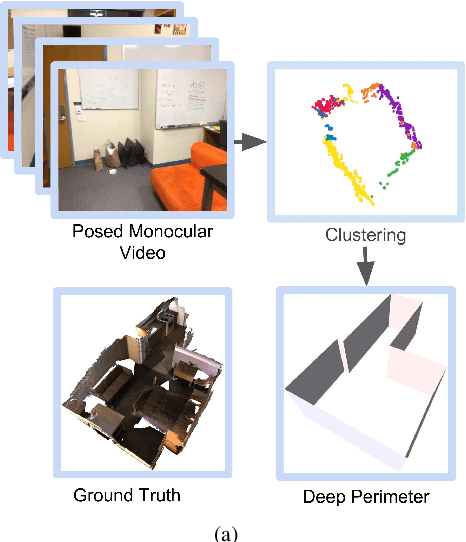

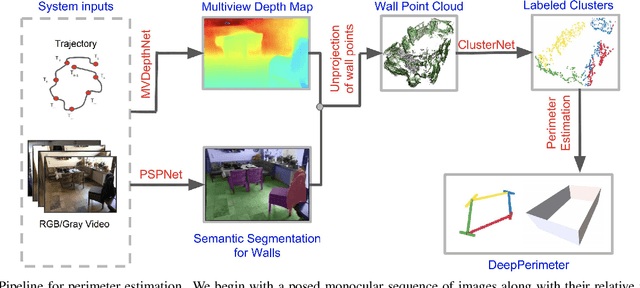
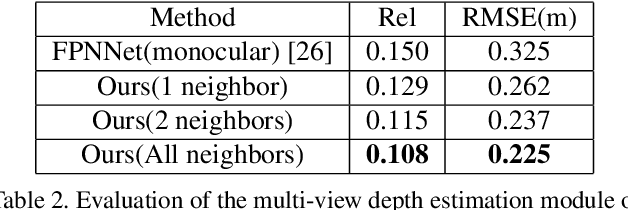
Abstract:We present DeepPerimeter, a deep learning based pipeline for inferring a full indoor perimeter (i.e. exterior boundary map) from a sequence of posed RGB images. Our method relies on robust deep methods for depth estimation and wall segmentation to generate an exterior boundary point cloud, and then uses deep unsupervised clustering to fit wall planes to obtain a final boundary map of the room. We demonstrate that DeepPerimeter results in excellent visual and quantitative performance on the popular ScanNet and FloorNet datasets and works for room shapes of various complexities as well as in multiroom scenarios. We also establish important baselines for future work on indoor perimeter estimation, topics which will become increasingly prevalent as application areas like augmented reality and robotics become more significant.
Visual Dialog
Aug 01, 2017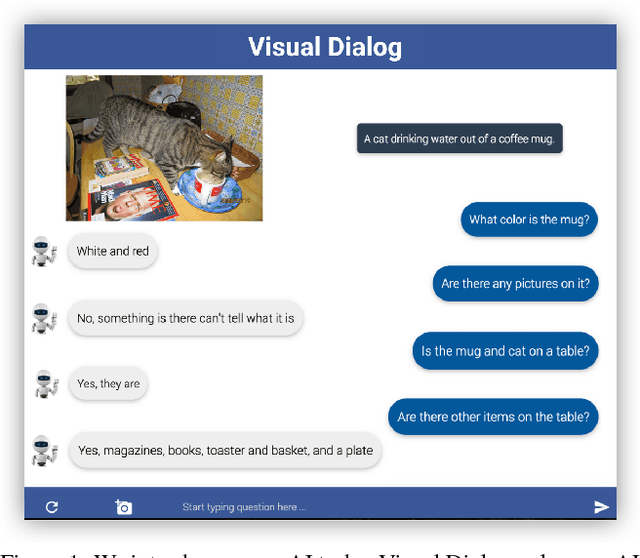
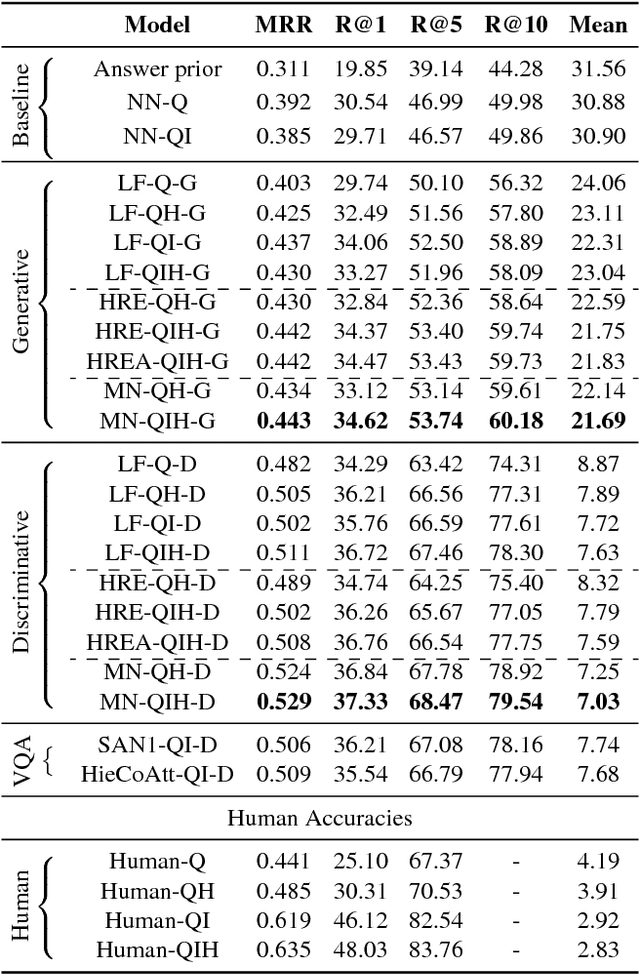
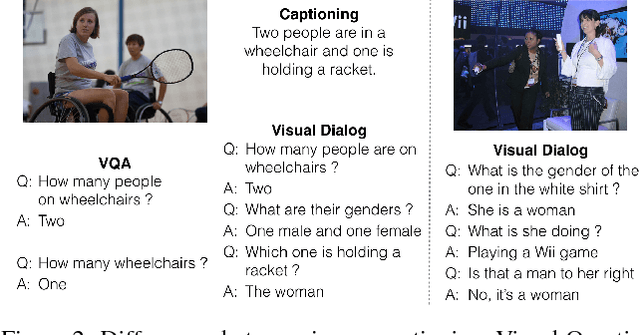

Abstract:We introduce the task of Visual Dialog, which requires an AI agent to hold a meaningful dialog with humans in natural, conversational language about visual content. Specifically, given an image, a dialog history, and a question about the image, the agent has to ground the question in image, infer context from history, and answer the question accurately. Visual Dialog is disentangled enough from a specific downstream task so as to serve as a general test of machine intelligence, while being grounded in vision enough to allow objective evaluation of individual responses and benchmark progress. We develop a novel two-person chat data-collection protocol to curate a large-scale Visual Dialog dataset (VisDial). VisDial v0.9 has been released and contains 1 dialog with 10 question-answer pairs on ~120k images from COCO, with a total of ~1.2M dialog question-answer pairs. We introduce a family of neural encoder-decoder models for Visual Dialog with 3 encoders -- Late Fusion, Hierarchical Recurrent Encoder and Memory Network -- and 2 decoders (generative and discriminative), which outperform a number of sophisticated baselines. We propose a retrieval-based evaluation protocol for Visual Dialog where the AI agent is asked to sort a set of candidate answers and evaluated on metrics such as mean-reciprocal-rank of human response. We quantify gap between machine and human performance on the Visual Dialog task via human studies. Putting it all together, we demonstrate the first 'visual chatbot'! Our dataset, code, trained models and visual chatbot are available on https://visualdialog.org
 Add to Chrome
Add to Chrome Add to Firefox
Add to Firefox Add to Edge
Add to Edge